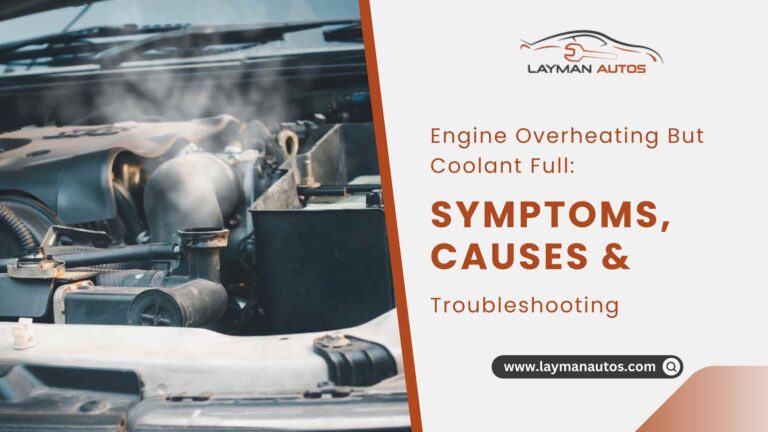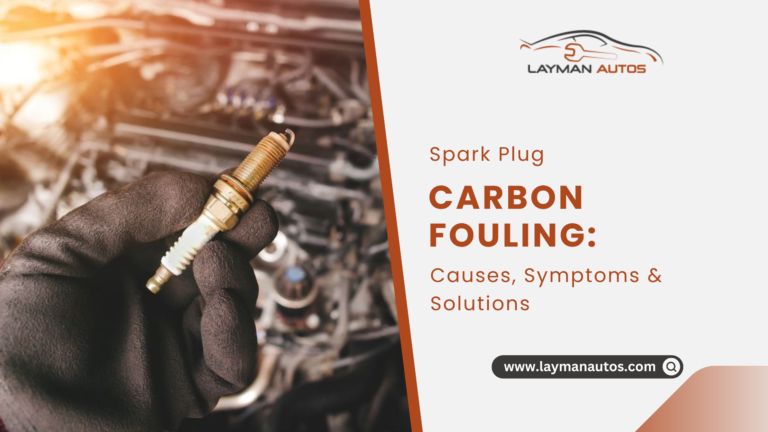How Hot Do Car Exhausts Get
If you are familiar with the typical operating temperature of your vehicle’s exhaust system, it will be simpler to notice any sudden increases or decreases in temperature. Naturally, you’re curious about How Hot Do Car Exhausts Get. To vent exhaust gases from the engine, the exhaust system utilizes several components.
The average temperature of an exhaust system’s pipe and the muffler is dependent on many factors. Depending on where in the exhaust system you are, temperatures can be anywhere from 300 to 1600 degrees Fahrenheit. However, the typical exhaust pipe or muffler temperature ranges from around 300 to 500 degrees Fahrenheit.
The variables that contribute to the extreme heat produced by a car’s exhaust system and exhaust pipe are discussed in this article.
How Hot Do Car Exhausts Get: Let’s Find Out

Toxic gases and other byproducts of combustion are released into the vehicle’s interior. The exhaust system is responsible for directing the engine’s emissions away from the vehicle. They are quite hot, thus cooling and filtering the air is necessary. The tailpipes will often get the hottest inside your car.
The exhaust manifold of a very powerful vehicle may emit light within the engine bay. Here we will find out the factors causing car exhaust to get too hot.
1. The Exhaust Manifold
The engine exhaust is where the gases are at their hottest. If you’re really pushing the car, the gas temperature here may approach 1,200 degrees Fahrenheit. In other words, the gases increase hotter as you move nearer to the cylinder heads. They begin to feel significantly cooler as they retreat from the engine.
Exhaust System’s Hottest Spots
It takes a lot of moving parts to complete the exhaust system. That’s why there’ll be a wide range of temperatures along the exhaust piping. The exhaust system’s hottest spots are the region around the catalytic converter and the bends in the pipe immediately adjacent to the cylinder.
Temperature
Exhaust system temperatures typically hover in the 630°F to 1700°F range. Temperatures can soar to between 1600 and 1800 degrees Fahrenheit if you drive for a long time or at a high rate of speed.
2. Muffler
The muffler is located at the very end of the exhaust system; nonetheless, it still retains a high temperature. Most mufflers have a temperature range of 300 to 500 degrees Fahrenheit.
The engine’s gases will get hotter as the engine speed increases. Extreme heat means more care is needed while changing or repairing a muffler.

The muffler is subjected to the hot exhaust gases coming from the engine. The muffler attenuates the exhaust’s noise by scattering the sound waves included in the exhaust gas. That’s why while the engine is running, the muffler may become up to 1200 degrees Fahrenheit hot.
3. Catalytic Converter
The exhaust gases are cleaned of any hazardous pollutants by the catalytic converters. The catalytic converter is running hotter than usual due to the chemical reaction taking place inside it. The typical operating temperature of a catalytic converter is roughly 1,050 degrees Fahrenheit.
High temperatures might result from the converter overheating or from the passage of unburned gases. In fact, an overheated converter may reach temperatures of over 2,000 degrees Fahrenheit, becoming an intense shade of red.
4. Oxygen Sensors
It’s true that the oxygen sensor gets quite hot when operating; it’s one of the hotspots in the exhaust system. The oxygen concentration in the exhaust is monitored by a sensor and sent to the ECU, which subsequently modifies the air-fuel ratio.
- The sensor is located behind (and occasionally before) the catalytic converter and is subjected to temperatures so high that it can cause it to glow white.
- The oxygen detectors are dispersed throughout the tailpipe. The temperature might differ substantially from one place to another.
- There will be the most intense heat on the first oxygen sensor as it exits the engine. However, it’s not simple for the sensors to follow the catalytic converter, especially if the converter becomes too hot.
What is an Exhaust?
To find out what causes exhaust system components to heat up so much, it’s necessary to first understand how the system operates.
Exactly what are the exhaust’s primary roles, if any? In order to lessen the amount of background noise, get rid of the exhaust, increase the efficiency of the engine, and boost its power, the exhausts are made.

Exhaust systems are made up of a manifold, resonator, catalytic converter, oxygen or lambda sensor, muffler, exhaust pipe, and tail pipe. The system’s configuration varies from vehicle to vehicle.
Factors Affecting Heat from Exhaust System
You might be wondering what causes hot exhaust in a car. Here are some of the top causes:
1. Condition of The Exhaust System
How hot it gets depends greatly on how well your exhaust system is working. The exhaust system’s temperature rises if it has to work around any obstructions.
To add insult to injury, the hotter the gases are, the harder the engine has to work to create the same amount of power. The gases might get too hot if the engine is overheating for whatever reason.
When there are plenty of turns and other obstacles in the exhaust system, temperatures might rise to dangerous levels. The reason for this is that hot exhaust gasses have a hard time getting out.
2. Engine Speed
Combustion in the engine results in the emission of these gases. As the vehicle’s speed increases, the engine’s workload rises, and more exhaust gases are released.
When you switch from 800 RPMs to 1800 RPMs, the engine’s gases will be significantly hotter than they were at 800 RPMs. In fact, the pipes won’t become as hot as they do while you’re driving if you’re just idling the engine.
Exhaust gas temperatures can soar to 1100 degrees Fahrenheit or more if the engine is revved to 2,000 RPM or higher at highway speeds. But if the engine speed is lowered to 700 RPM or less, the exhaust gas temperature will drop to 660 F or less, resulting in a cooler exhaust pipe.
The exhaust temperature rises in direct proportion to the engine speed.
3. Pipe Length & Design
As the name implies, the tailpipe is responsible for discharging the vehicle’s exhaust gases into the atmosphere from the back of the car, after the last silencer. How hot or cold the exhaust stays when the car is parked or in motion depends on how long the tailpipe is.

As the exhaust gases cool down throughout their journey to the vehicle’s exhaust pipe, more energy is wasted. On the other hand, if you reduce the distance, the gases within your exhaust pipe will likely be warmer.
The exhaust system benefits from longer tailpipes in some circumstances because the longer pipes allow more heat to dissipate.
The layout and dimensions of exhaust pipes vary from system to system. Depending on the dimensions of these pipes, the exhaust may be made either relatively cold or relatively hot. The greater the distance that the exhaust gases must travel, the more energy is wasted as heat. However, the gas will come out hotter and the pipe temperatures will rise if it doesn’t have far to travel.
4. The Health of the Engine
If your engine is healthy, it will produce adequate heat in the exhaust gases and your car will run smoothly. This is the point where the engine uses the most gasoline and produces the most horsepower. As a result, higher speeds result in higher temperatures.
An overheated engine is a sign of a malfunctioning or otherwise inefficient engine. The exhaust pipes will heat up and operate poorly if the system is sucking in combustion gases at greater temperatures than usual.
Preventing Damage to The Exhaust
Due to the high temperatures generated by the exhaust system and pipes, the components in their immediate vicinity are also in danger of failure. Fortunately, there are measures you may do to forestall this from happening:
1. Insulating The Exhaust Pipe
This is an excellent method of preventing heat from the exhaust from escaping the car and damaging other components. In spite of the obstruction, the exhaust system continues to function normally, despite the increased internal temperature.
Insulating exhaust pipes involves winding wraps or tapes around the pipes in a spiral pattern. If you need exhaust coverings that can handle greater temperatures, consider using silica, fiberglass, basalt, or ceramic. The melting point of fiberglass is around 300 degrees Celsius.
2. Reflective Barrier Between Engine And Exhaust
Keeping the exhaust pipe from radiating heat into space is not always easy. On the other hand, you may deflect heat away from the engine and its surrounding components. Installing a reflecting barrier or substance between the engine compartment and the exhaust pipe can help deflect some of the heat.

Modern automobiles have embossed aluminum or steel heat shields in an effort to regulate interior temperatures. Shields like this are installed at a distance of 1 to 2 centimeters from the tailpipe and the manifold. This creates a space where air may flow, allowing for more efficient heat dissipation.
Frequently Asked Questions
How Hot Does An Exhaust Manifold Get?
The exhaust manifolds in your vehicle are the starting point for the exhaust gasses, thus they get rather warm. Because it is attached directly to the motor, it receives the hot exhaust gases immediately after they leave the engine. Exhaust manifolds often reach temperatures between 1200 and 1600 degrees Fahrenheit.
How Hot Do Exhaust Pipe Temperatures Go?
The exhaust system in your automobile is an intricate system with numerous moving elements. What really matters is that the hot exhaust gasses from your internal combustion engine are making their way through the exhaust pipes, warming up the surroundings. The normal operating temperature of an exhaust pipe is 610 to 930 degrees Fahrenheit.





